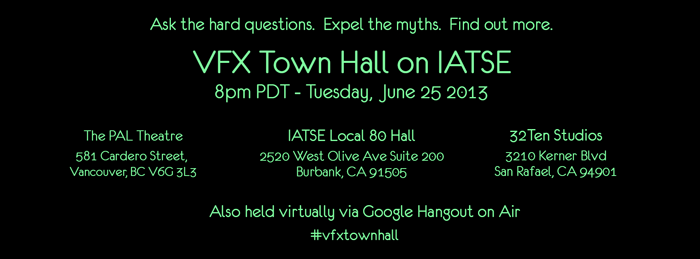June 30, 1933 - A group of actors meet in secret at Frank (the Wizard of Oz) Morgan's house to form the Screen Actors Guild. The secrecy was because studios threatened to blacklist anyone who so much as breathed the word union. Among the founding members that night are James Cagney, Groucho Marx, Joan Crawford, Franchot Tone, Frederic March, Robert Montgomery and Boris Karloff.
(Karloff is a fascinating man. In the 50s he tried to help makeup man Jack Pierce sue Universal over rights to the famous Monsters. There is little in Shelley's book about what Frankenstein's monster looked like. Pierce made up the famous image of flat-top and bolts in neck. But all he got was straight salary and a layoff when he got too old.) ...
-- Tom Sito, Animation Guild President (emeritus)
In the Land of the Free, most salaried creators are "workers for hire." Which means anything they dream up while on salary belongs to the employer. (No "moral rights" for you!) This was, sadly, Jack Pierce's fate.
The struggle to unionize Hollywood workplaces went on for years after that 1933 meeting. As Ken Orsatti, former SAG executive director, relates: "In 1937, the studios ... signed a contract with the Guild that, for the first time in Hollywood, gave actors a sense of empowerment."
Other workers in Hollywood also had long struggles working to unionize the big studios. Before entertainment guilds and unions gained footholds, there were no standards, few rules, and everybody made his or her own deal. Workers on sets worked killing hours (as one of them said: "We worked until we fell down.") It was the same for animation artists. Long hours and six day weeks were the norm, and there was no additional compensation for the sixth day, only a box lunch (if the artists were lucky.)
The National Labor Relations Act of 1935 was the engine that propelled many labor unions to victory (and collective bargaining agreements) in Hollywood. It wasn't until 1941 that cartoonists came under the Screen Cartoonists Guild. Eleven years after that, the Animation Guild (then the Motion Picture Screen Cartoonists) was born.
The fight to achieve better treatment and more money never really ends. In the 21st century, visual effects artists are working to gain the rights that editors, makeup artists, writers, actors and directors have enjoyed for seventy years. As in the 1930s ... 1960s ... 1990s, it's about leverage.
If the big stars hadn't lined up behind the Screen Actors Guild at Frank Morgan's house at the bottom of the Depression, SAG might never have happened.
Click here to read entire post






